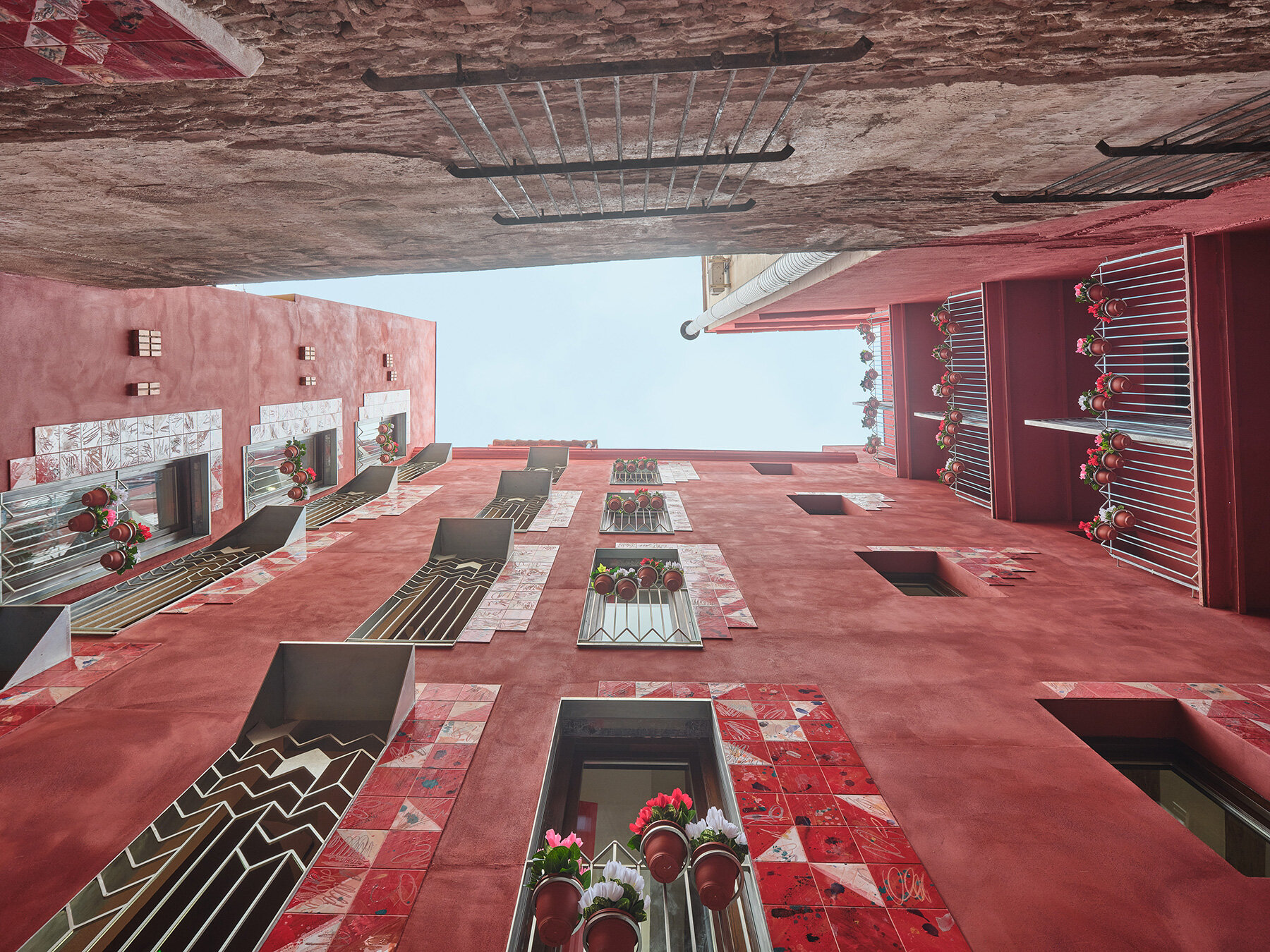MIAS architects reimagines Barcelona’s historic building
In Barcelona’s Raval district, MIAS Architects completes Lady Raval, a social housing project that revitalizes a once-fragmented building. Positioned on the emblematic Hospital Street, the team revamps a historic structure, weaving in the cultural richness of the neighborhood and the lived experiences of its community. Awarded first prize in the city’s competition, the restoration transforms a decaying apartment block into a bright housing complex built around a richly detailed central courtyard.
At the center of the transformation is the courtyard, brought back to life as both the heart of the building and a space shared by everyone who lives there. Once closed off and cluttered, it’s been opened up and redesigned as a calm, welcoming area that connects all the homes. The architecture here tells a story using textured walls, handmade ceramics, and colors inspired by everyday objects like fabrics, food, and tools. These elements reflect the different cultures and backgrounds of the people who live in Raval, many of whom are returning to live in this newly restored space. ‘The project is both a refurbishment of a historic building in central Barcelona and a tribute to the memory and cultural roots of its inhabitants,’ notes Josep Miàs, director and founder of MIAS Architects.

all images by Adrià Goula
lady raval transformed by removing additions
Internationally recognized MIAS Architects maintains the integrity of the original structure while reconfiguring the interior into a series of open, light-filled spaces that invite connection and comfort. Lady Raval is made up of two parts, one facing the street and another L-shaped wing that wraps around its central courtyard. Over the years, these spaces had been broken up into tiny units, with makeshift additions, even on the roof, making the building feel cramped and chaotic. The architectural team removed these additions and brought back a clearer layout, with two apartments per floor in the front building and three per floor in the wing. They kept the two staircases, added a lift in each section to make the building accessible, and a shop on the ground floor that still opens out onto the street, staying part of the daily life of the neighborhood.

MIAS Architects use handmade ceramic tiles in the courtyard
ceramic tiles narrate the residents’ personal stories
Working closely with architect and ceramist Carlos Jiménez Cenamor, MIAS Architects use handmade ceramic frames in the courtyard to bring in patterns and shapes inspired by the cultural backgrounds of the residents. These ceramic details are tied to personal and collective stories, helping the space feel familiar and full of meaning. The colors are bright and warm, and together with plants that hang from balconies, they give the courtyard a sense of life.
MIAS redesigned Lady Raval’s circulation areas, staircases, landings, and hallways so they feel open and welcoming. With added windows and carefully placed openings, light passes through the whole building, and people can see and connect with each other.

at the center of the project is the courtyard

these ceramic details are tied to personal and collective stories

the colors are bright and warm, reviving the space

bringing in patterns and shapes inspired by the cultural backgrounds of the residents

these elements reflect the different cultures and backgrounds of the people who live in Raval

MIAS Architects maintains the integrity of the original structure

reconfiguring the interior into a series of open, light-filled spaces

the project transforms a decaying apartment block into a bright housing complex
project info:
name: Lady Raval
architect: MIAS Architects | @miasarchitects
location: Raval, Barcelona, Spain
ceramics: Carlos Jiménez Cenamor (DelAmorYlaBelleza) | @delamorylabelleza
photographer: Adrià Goula | @adriagoulaphoto
The post ceramic tiles tell stories of barcelona’s residents in restored social housing by MIAS architects appeared first on designboom | architecture & design magazine.